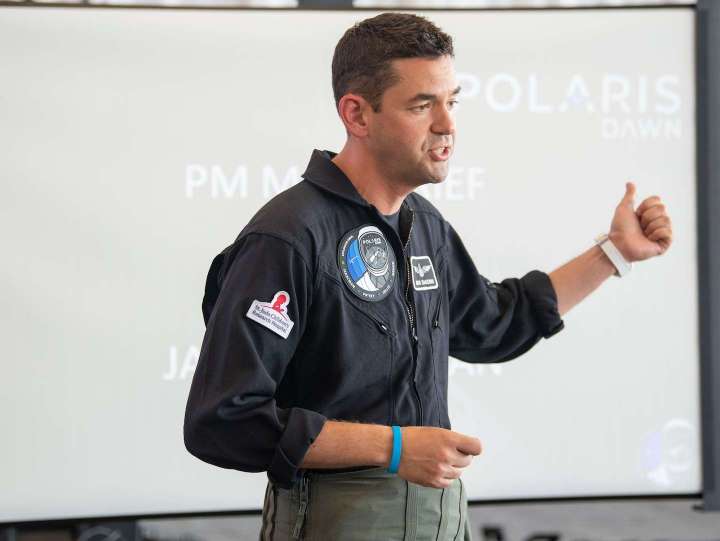NASA’s Hubble Space Telescope is old and, after more than 30 years in space, somewhat worn and tired. It has been upstaged recently by the new James Webb Space Telescope, which is bigger, more powerful and is beaming back images of the universe that have astronomers drooling.
NASA, hoping to extend life of Hubble telescope, looks to SpaceX

So when SpaceX recently approached NASA and offered to boost the telescope to a higher altitude and extend its life, NASA was intrigued.
On Thursday, NASA and SpaceX announced that they would study whether such a mission were even feasible. In some ways, it is yet another partnership between the space agency and SpaceX, as NASA seeks to leverage the growing capabilities in the commercial space sector to further its exploration and science goals. Elon Musk’s company already delivers supplies and even NASA’s astronauts to the International Space Station.
But the Hubble mission, should it come to pass, would represent a new dynamic — one made possible by the fact that SpaceX has already sold multiple spaceflight missions to a billionaire technology entrepreneur who is eager to push boundaries.
Last year, Jared Isaacman, the founder of the payment processing firm Shift4 Payments, commissioned a flight from SpaceX that took him and three other private citizens to space for three days, making them the first all-civilian crew to reach orbit. Now, Isaacman is paying for three more flights, each designed to enter new territory as part of what he calls the Polaris program.
The first, planned for March, is to send another crew of private citizens farther than any other human spaceflight mission since Apollo. That mission also would involve the first civilian astronaut spacewalk.
While preparing for the March flight, Isaacman had been quiet about what the second trip would entail. On Thursday, though, he made clear that he wants to send a civilian crew to move Hubble to a higher orbit. And he said that could be accomplished with “little to no potential cost to the government.”
For NASA, though, the proposal is a little tricky. It can’t just award SpaceX or Isaacman a mission, even if it comes at no cost to the government. Federal procurement rules dictate that there must be competition to provide such services, which is why agency officials stressed that the study of Isaacman’s proposal is only that — a study. NASA and SpaceX said they would explore over the next six months how the company’s Dragon spacecraft would dock with the telescope, what sort of modifications would have to be made, or even if the mission could be done autonomously, without any crew members aboard.
“There are no plans for NASA to conduct or fund a servicing mission or compete this opportunity; the study is designed to help the agency understand the commercial possibilities,” NASA said in a statement.
It added that the study “is nonexclusive, and other companies may propose similar studies with different rockets or spacecraft as their model.”
Since Hubble was launched in 1990, NASA has sent five servicing missions to the telescope. The first was undertaken in 1993 to correct a problem with Hubble’s primary mirror that was affecting the clarity of the images it was sending back. But when the space shuttle was retired in 2011, NASA had no way to get back to Hubble and accepted that its beloved telescope would eventually die.
Now, however, not only does NASA have SpaceX, which has a successful record docking with the space station, but there is also a whole new industry beginning to emerge for repairing and refueling satellites in space, breathing new life into what would otherwise become pieces of junk in orbit.
In 2020, for example, a spacecraft built by Northrop Grumman latched on to a communications satellite operated by Intelsat that was running out of fuel. Once attached, Northrop’s spacecraft essentially became a tow truck, taking over propulsion for the satellite and ensuring it maintains the correct orbit and orientation.
If SpaceX or another company can raise Hubble by 40 miles or so, that could “easily add 15 to 20 years of orbit life to the mission,” Patrick Crouse, the Hubble Space Telescope project manager, said Thursday.
Over more than three decades, Hubble “has provided us with clear, detailed views that reach farther out in space and further back in time than any of its predecessors. Hubble’s observations have charted the evolution of galaxies, stars, nebulae, comets, the outer planets, and their moons,” NASA says.
Yes, the Webb telescope is 1 million miles from Earth and is able to peer back 13.5 billion years to the dawn of the universe. But Webb was never supposed to replace Hubble, according to the space agency.
“The goal is for both telescopes to operate at the same time to conduct joint observations for several years,” NASA has said.
The only option NASA has to extend Hubble’s life, though, is to look to the private sector.
“As we go forward and we look at the emerging commercial market, we always want to look at any and all possible opportunities to accomplish the science goals NASA has,” said Thomas Zurbuchen, the head of NASA’s science mission directorate. “Commercial partnerships, we have learned, open the door for new and exciting opportunities for natural scientific exploration by offering new ideas and innovative ways to support them.”






